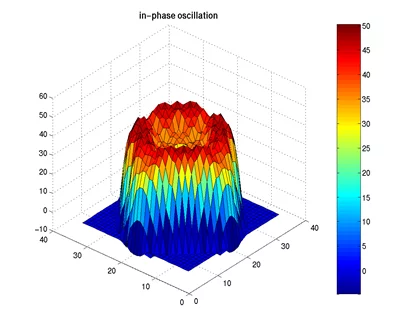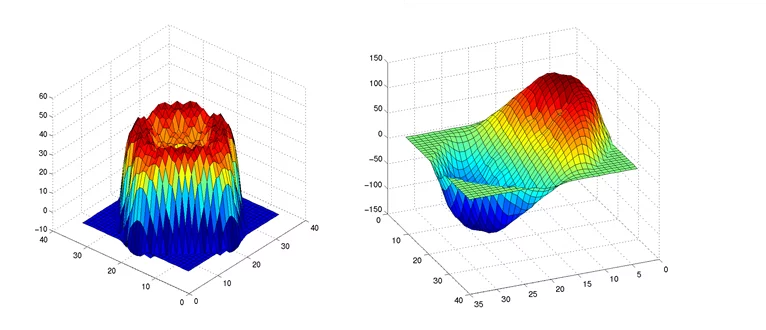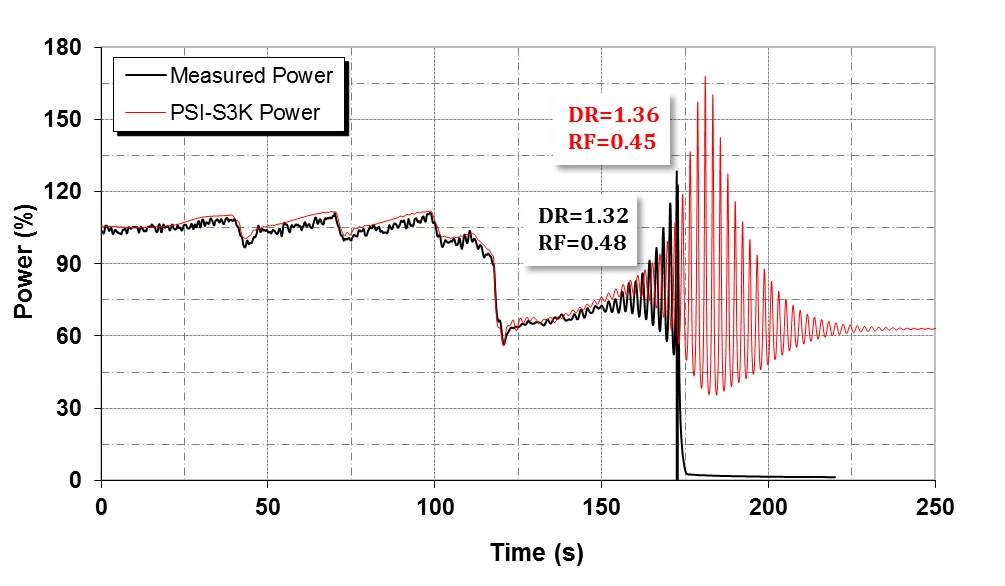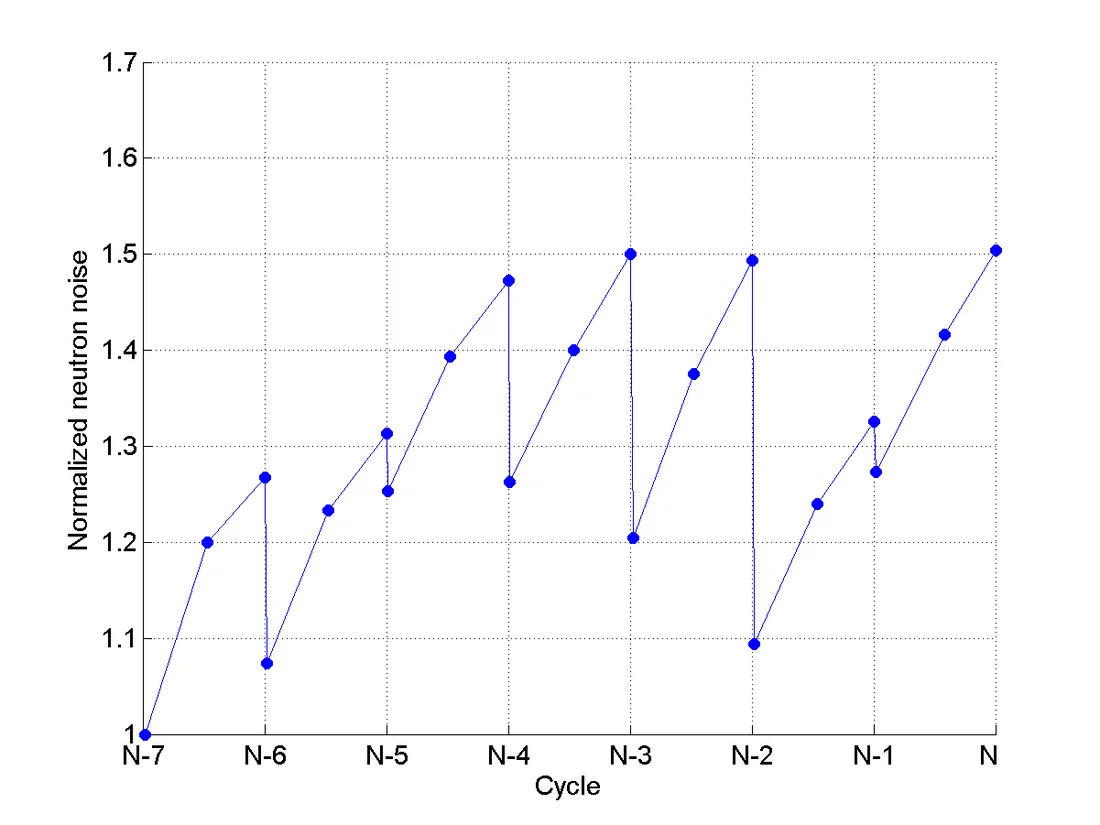BWR Stability Analysis: the Art of Simulating Complex Dynamic Behaviour
One of the challenging areas of reactor dynamics is the stability analysis of Boiling Water Reactors (BWRs), which are complex systems designed to remain very stable under normal operating conditions, but they might be susceptible to instabilities, under very rare and specific conditions, in which diverging power oscillations or even limit cycle oscillations may develop. The latter is clearly an illustration of a transition from a linear to a nonlinear regime. Understanding the complex nonlinear behaviour of BWR cores under power oscillations is a relevant scientific task, since it employs advanced nonlinear-dynamics mathematical theories, such as bifurcation and centre manifold theories, to predict the full solution manifold of the system.
The reason behind such instabilities is the strong nonlinear coupling, via reactivity feedbacks, between the neutronics and thermal-hydraulic components. Mainly two kinds of power oscillations have been observed in BWRs: 1) global or in-phase power oscillations, where the power in fuel bundles across the whole core oscillates in phase; and 2) regional or out-of-phase oscillations due to the excitation of the first azimuthal mode, where half of the core behaves out of phase with respect to the other half (Figure 1). It should be emphasized that, even if the instabilities would develop, there are online monitoring systems to detect and then prevent and/or suppress such instabilities.
In this context, within the STARS project at PSI, a new stability analysis methodology has been developed and validated, in the last years, which relies on in-house best-estimate coupled neutronics/thermal-hydraulic code system. The concept is to combine systematically a single unique vessel thermal-hydraulic model with a full 3D core model with the aim to achieve an integral methodology that can then be applied with strengthened reliability for predictions and/or interpretations of the complex nonlinear and strongly coupled neutronics/dynamical phenomena characterizing BWR stability.
In the framework of an international OECD/NEA benchmark, this methodology has shown its capability to simulate the stability event that occurred at the Swedish Okarshamn-2 (O2) nuclear power plant, in 1999. The model simulation showed very good agreement with the measured power oscillations both qualitatively and quantitatively (Figure 2). The simulation illustrated even scenarios about the core stability behaviour if the reactor SCRAM (reactor shutdown system) had not been activated and indicated in this context that the diverging oscillations would reach maximum amplitude before decaying back into a stable state without the intervention of the operator.
Furthermore the methodology has illustrated its capability to simulate even more complex and challenging behaviours. For instance, a phenomenon that was observed in a BWR and, up to now, is not well-understood and not easily reproduced by numerical methods, where not only growing power oscillation amplitudes in an out-of-phase regime were observed but also with an oscillating and rotating symmetry line as shown in this movie:
The simulation resulted in an in-depth explanation of the main phenomena responsible of this complex instability. Hence it was found that the excitation of not only one azimuthal neutron flux (power) mode but also a second mode triggers the oscillation and the rotation of the symmetry, depending on the dominance or not of one mode.
Reactor Neutron noise Analysis: Extracting Information from Noise
A second challenging topic in reactor dynamics is the numerical simulation of complex fluctuation of neutron noise, which is an inherent stochastic process, in operating reactors, characterized by fluctuations of neutronic, thermal-hydraulic, and mechanical parameters. In a recent research, advances have been made towards simulating, in the time domain, the response of neutron noise signal to fuel assembly vibrations and/or core coolant inlet temperature fluctuations (Figure 3). The main goal is to investigate the reasons behind the increasing level of the neutron noise amplitude, measured at certain cycles of several PWRs reactors worldwide. In addition, the modelling of neutron noise through enhancing numerical simulation methods has been consolidated, at STARS project, by the signal noise analysis which gives beneficial information for monitoring and diagnosing anomalies in the nuclear reactor components. In this context, one main recent achievement is the establishment, for the first time in nuclear reactor field, of a causality analysis technique, being widely applied in neuroscience and economics. This technique has the capability to examine and investigate the information flow paths and cause-and-effect connections within a multivariate system.
Contact
Dr. Alexander Vasiliev
Steady-State, Transient and Radiation Safety Analyses - Core Group (STARS)
Laboratory for Reactor Physics and Thermal-Hydraulics (LRT)
Nuclear Energy and Safety Research Division (NES)
Paul Scherrer Institut
Original Publications
Analysis of Oskarshamn-2 Stability Event using TRACE/SIMULATE-3K and Comparison to TRACE/PARCS and SIMULATE-3K stand-alone
A. Dokhane, J. Judd, I. Gajev, O. Zerkak, H. Ferroukhi and T. Kozlowski
Annals of Nuclear Energy December 2016: Vol. 102, pp. 190–199
DOI: 10.1016/j.anucene.2016.12.015
Validation studies and interpretation of the Oskarshamn-2 1999 stability event with SIMULATE-3K
A. Dokhane, H. Ferroukhi and A. Pautz
Annals of Nuclear Energy October 2016: Vol. 96, pp. 344–353
DOI: 10.1016/j.anucene.2016.06.016
On out-of-phase higher mode oscillations with rotation and oscillation of symmetry line using an advanced integral stability methodology
A. Dokhane, H. Ferroukhi and A. Pautz
Annals of Nuclear Energy May 2014: Vol. 67, pp. 21–30
DOI: 10.1016/j.anucene.2013.11.006






